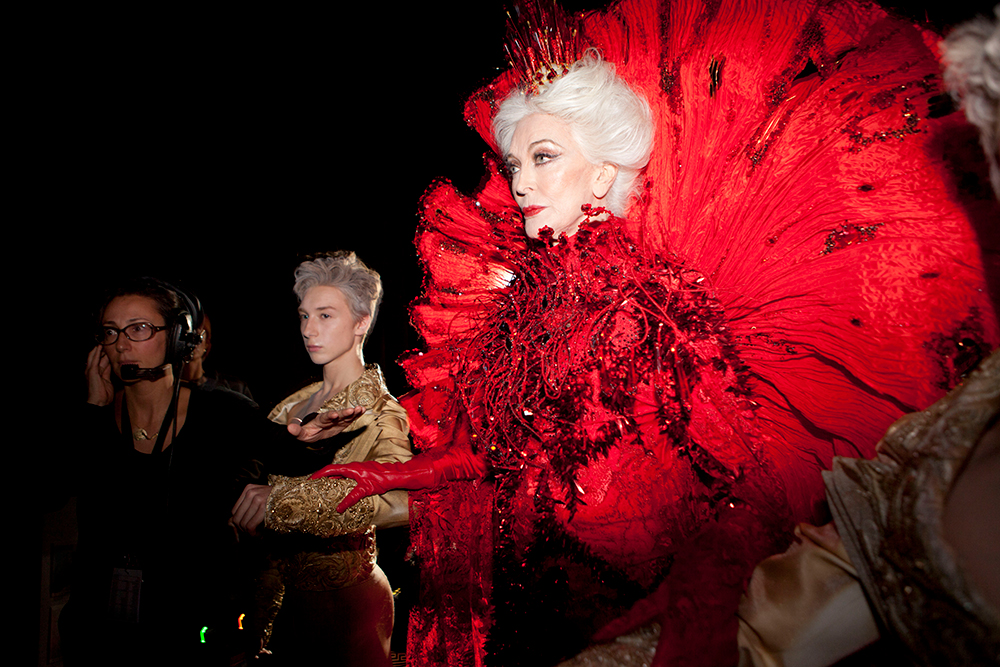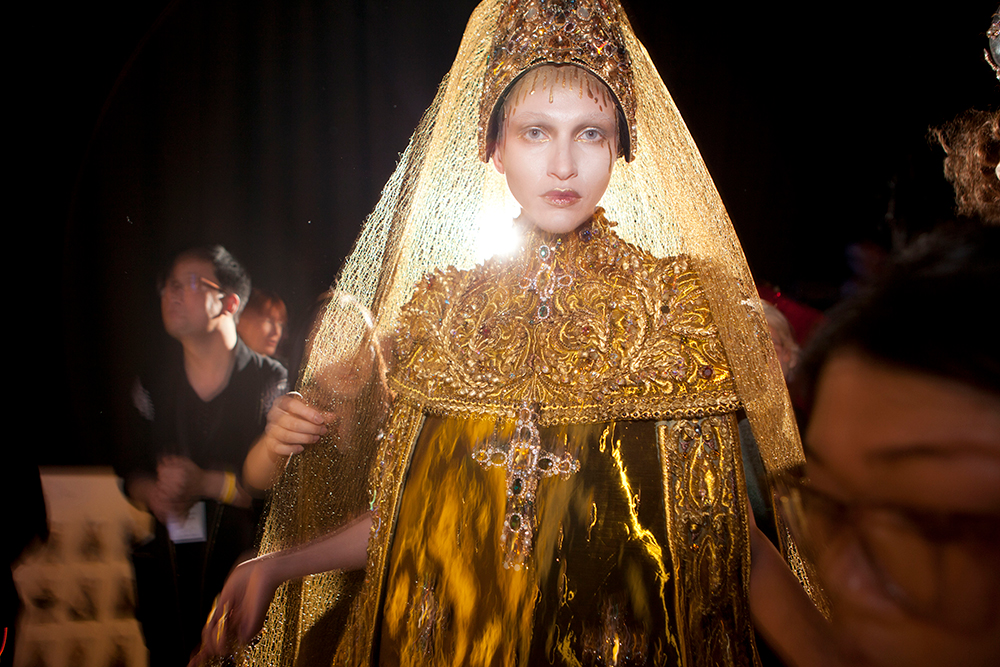
When designer Guo Pei was a little girl growing up in Beijing, her grandmother used to tell her bedtime stories. Rather than sending her granddaughter off to sleep with fantastical fairy tales, she instead described embroidering flowers and butterflies onto soft silk fabrics.
Those stories proved just as magical as any classic folk tale to a child growing up amid the Cultural Revolution, when the anti-fashion utilitarianism of the Mao suit reigned. Guo credits those stories with inspiring the exquisitely elegant, feminine, and culturally attuned aesthetic she is known for today. “Chinese culture is in my blood,” she says. “It’s always present in my designs.”
Now 51, Guo represents that culture globally as China’s most internationally renowned designer. The latest platform for her elaborate creations is “Guo Pei: Couture Beyond”, a retrospective at the Vancouver Art Gallery, which features over 40 pieces drawn from the past 10 years of her work.
It is the first fashion exhibition to be hosted by the gallery, and offers a rare chance to take an up-close look at embroidery that took 50,000 hours to hand-stitch and garments that weigh over 50 pounds. Towering shoes with soles that resemble flower pots, inspired by Manchurian designs, added so much height to the mannequins that the gallery had to customize support rods to keep them standing.
Guo was already acclaimed in China when Rihanna wore her 55-pound canary-yellow cape, trailed by an unforgettable 16-foot train, to the Met Gala in 2015. Guo’s momentum continued through 2016, when she was invited to become a guest member of the Chambre Syndicale de la Haute Couture, the first Chinese designer invited to join the 21-member group of elite couturiers. “I feel honoured to be able to present my works on such a high-end, professional platform,” she says. “Haute Couture combines fashion and art. Designers have the freedom to explore with greater creativity and imagination, beyond the limits of the markets.”
Her campaign to be granted Haute Couture status is chronicled in Pietra Brettkelly’s recent documentary about Guo, Yellow Is Forbidden. Even after Guo is inducted, she speaks pointedly about the Haute Couture circle. “They’re prejudiced against us because we’re from the East,” she says in a speech to her team. “Even though China is rich in culture, they don’t think that applies to fashion and luxury. But China has 5,000 years of history.” “Like any of us, we have a goal and we reach it and we go, ‘Oh, was that it?’” Brettkelly says. “It’s sometimes not all we thought it would be.”

Brettkelly spent two years with Guo for the documentary, which has been selected as New Zealand’s submission for the Best Foreign Language Film category at the Academy Awards. Guo saw it for the first time at the Vancouver International Film Festival in October. Seeing footage of her father, who has since passed away, moved her to tears.
Guo’s standards can be heartbreakingly high. “I have seen her ask people to unpick something that they had spent hours and hours over because it wasn’t good enough,” Brettkelly recalls. “I am a perfectionist,” Guo admits. “I am consistently pursuing better and more delicate designs.”
She recalls creating a dress from her 2006 collection, Samsara—a sculptural evening gown called Dajing, which was embroidered with a gold dragon. “My team was almost driven crazy,” she says. “We ended up spending 50,000 hours on this couture dress. It is still astonishing to look at after more than 10 years.”
That perfectionism is born from the same muse she discovered when her grandmother was whispering stories of embroidered butterflies: the rich culture of China. “I hope that [my brand] can continue to show authentic Chinese craftsmanship to the world,” she says. “I will continue my journey, pursuing beauty and love.”

